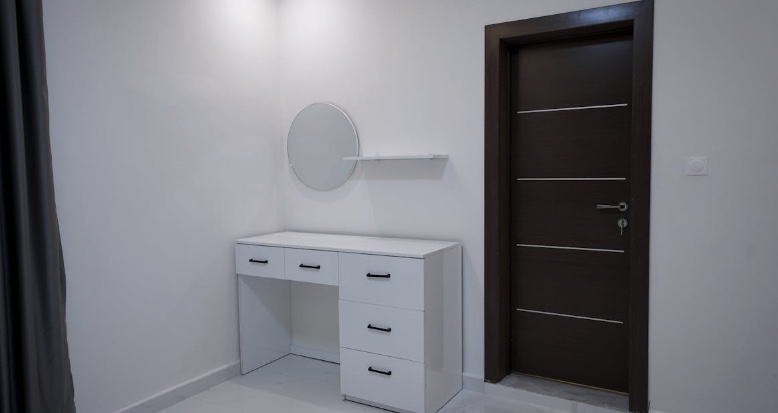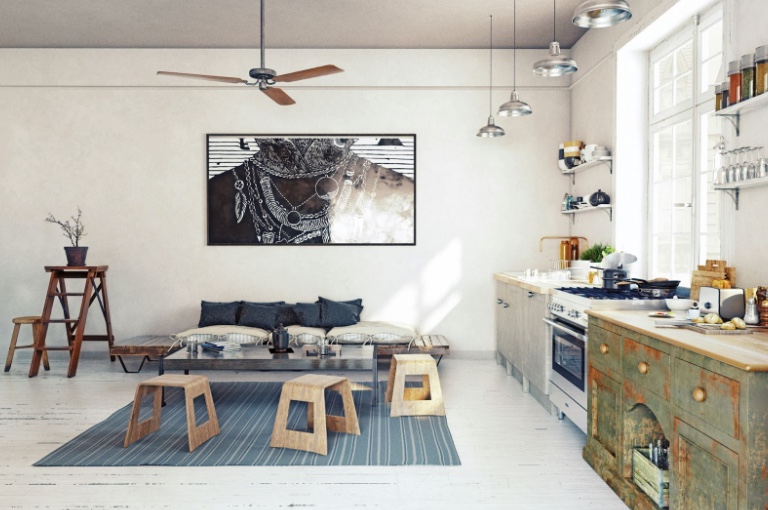Modern Home Solutions for Compact Living Spaces: Maximize Style, Comfort, and Functionality

Living in compact spaces doesn’t mean we have to compromise on style or functionality. With modern home solutions, we can transform even the smallest areas into efficient, comfortable, and aesthetically pleasing environments. Whether it’s smart furniture or clever storage ideas, there’s no shortage of innovative ways to make the most of limited square footage.
As urban living grows, so does the need for creative designs that cater to smaller homes. By embracing multi-purpose furniture and space-saving layouts, we can maximize every inch of our living spaces. From foldable desks to modular sofas, these solutions not only enhance our homes but also reflect a sustainable approach to modern living. Let’s explore how we can turn compact living into a stylish and functional experience with the right tools and strategies.
Understanding Compact Living Spaces
Compact living spaces, often under 500 square feet, require maximizing functionality without sacrificing comfort. Smaller homes, apartments, and even converted structures like a 12 x 16 shed provide opportunities to rethink traditional layouts. These spaces challenge us to focus on essential living areas while reducing clutter.
Efficient design solutions revolve around creating multi-use zones. For example, a living area might incorporate a hidden work desk or a modular sofa with storage. Vertical storage options, such as wall-mounted shelves, can free up floor space and enhance usability. Natural lighting and mirrors further create an illusion of spaciousness.
Adaptable furniture plays a crucial role for those in compact environments. Foldable tables or wall-mounted beds help transition between purposes, like from a dining area to a guest room. In cases where mobile solutions are necessary, moving small appliances like tabletop dishwashers can significantly improve convenience.
Such environments also promote sustainable living by encouraging minimalism. Compact spaces reduce consumption needs, from energy to furnishings, aligning with eco-conscious practices, like installing EverFlo Oxygen Concentrators.
Key Challenges in Compact Living
Compact living often requires tackling challenges that affect functionality, comfort, and design feasibility. To optimize small spaces effectively, creative solutions must address storage limitations, multitasking needs, and aesthetic balance.
Limited Storage
Storage constraints are a primary issue in compact spaces, making organization essential. Small living areas demand innovative storage solutions like vertical shelving, under-bed compartments, and built-in units. Without ample square footage, clutter quickly accumulates, reducing the livable area. Properly zoning and utilizing spaces such as corners can enhance functionality. For instance, integrating furniture with hidden storage options, such as ottomans or platform beds, optimizes limited room while maintaining accessibility. Portable storage solutions like wheeled carts can also offer flexibility in reconfiguring layouts as needed without sacrificing practicality.
Multifunctional Needs
Compact homes must support multiple activities within the same area. Living rooms often double as workspaces or guest rooms, requiring furniture like foldable desks and wall-mounted beds to meet diverse purposes. Modular furniture, such as sectional sofas with removable seating, accommodates changing needs effectively. Sections under 500 square feet especially benefit from mobile design elements like rolling kitchen islands or collapsible dining tables. Every square foot should align with specific functions while allowing effortless adaptability for daily transitions and occasional requirements.
Aesthetics and Comfort
Combining appealing design with comfort is another challenge in small living spaces. Overcrowding can make areas feel cramped, negatively impacting both usability and relaxation. To create an inviting atmosphere, embracing minimalist design reduces unnecessary items, allowing for more open space. Lighter color palettes, mirrors, and strategic lighting amplify brightness and airiness, counteracting visual clutter. Compact yet plush furnishings, such as oversized armchairs or upholstered stools, merge coziness with scale-appropriate proportions, ensuring that comfort isn’t compromised in smaller interiors.
Modern Home Solutions for Compact Living Spaces

[Photo by Getty Images on Unsplash]
Modern living in compact spaces prioritizes functionality, flexibility, and aesthetics. With the right strategies, even the smallest areas can become efficient and visually appealing.
Modular Furniture
Modular furniture transforms small interiors by offering customizability and adaptability. Items like sectional sofas and stacking chairs cater to different needs and rearrange easily. Wall-mounted desks, combining workspace and storage, optimize functionality. Expandable dining tables provide flexibility for varying group sizes in shared spaces. By using modular designs, we maximize utility without overcrowding the room. For example, a modular sofa converts a living room into a guest room when paired with a pull-out bed structure.
Space-Saving Storage Systems
Space-saving storage improves organization in compact homes. Vertical storage, such as floating shelves and tall bookcases, utilizes unused wall space. Under-bed compartments and built-in cabinets hide items while maintaining an uncluttered appearance. Corner-mounted racks extend storage to areas often neglected, fitting small kitchens or bathrooms. By integrating these systems, we enhance functionality without sacrificing style. For instance, floating shelves in a 12 x 16 shed allow storage without occupying floor space.
Smart Home Technologies
Smart home technology increases efficiency in limited spaces. Voice-activated devices, such as smart hubs, consolidate control over lighting, temperature, and security, reducing the need for multiple gadgets. Compact solutions, like slim smart thermostats, preserve space while delivering convenience. Smart lighting, offering adjustable brightness and color temperatures, elevates ambiance. These tech innovations create intelligent, connected homes suited to compact living. For example, motion-sensing bulbs save energy while illuminating tight entryways effectively.
Maximizing Functionality and Style
Combining functionality and style in compact spaces involves creative strategies and intentional design choices. We focus on multitasking elements that enhance both practicality and aesthetics.
Creative Design Inspirations
Incorporating adaptable furniture and thoughtful layouts transforms limited spaces into versatile living areas. Multifunctional pieces like sofa beds or extendable dining tables allow seamless transitions between activities. Wall-mounted shelves and pegboards utilize vertical surfaces while keeping items within reach. Integrated storage solutions, such as hidden compartments within seating or staircases, reduce clutter while maintaining visual appeal. Minimalist designs with clean lines and neutral tones can create an illusion of openness in smaller rooms.
For those interested in outdoor compact structures, a 12 x 16 shed can be repurposed into a functional office, guest room, or studio with the addition of modular furniture and proper insulation. Such creative approaches ensure that style is never sacrificed for space efficiency.
Incorporating Natural Light
Enhancing natural light improves the ambiance and perceived size of compact interiors. Large mirrors strategically placed opposite windows reflect light and amplify brightness. Sheer curtains or blinds are ideal for maintaining privacy without blocking sunlight. Sliding glass doors or translucent partitions can divide spaces while maintaining an open feel.
Furniture placement also matters; keeping bulky items away from windows maximizes incoming light. Choosing lighter wall colors, like whites or pastels, helps reflect natural light and complements compact designs. Combining these techniques fosters a welcoming, airy environment while optimizing energy use in smaller living areas.
Budget-Friendly Ideas for Small Spaces
Maximizing compact living spaces doesn’t mean overspending. We can achieve functional and stylish interiors on a budget by prioritizing versatile solutions and creative adaptations.
- DIY Storage Solutions
Installing floating shelves offers affordable vertical storage. Using under-bed storage containers keeps items organized without taking extra space. Repurpose crates or old cabinets to create DIY furniture with both style and functionality.
- Multi-Purpose Furniture
Furniture pieces that serve multiple purposes save space and money. Opt for ottomans with hidden compartments or daybeds that double as seating. Foldable tables attached to walls can function as dining spaces or workstations when needed.
- Compact Outdoor Enhancements
A compact 12 x 16 shed provides cost-effective, additional storage for items that clutter indoor spaces. This solution creates room indoors while making outdoor areas more functional and organized.
- Affordable Decor Enhancements
Using peel-and-stick wallpaper quickly refreshes small interiors without major expenses. Add larger mirrors to create the impression of a bigger room. Invest in energy-efficient LED lighting for cost savings while enhancing brightness in your home.
- Thrift and Upcycle
Look for second-hand furniture or home decor items at thrift stores. Updating these pieces with paint or fabric creates high-end looks at minimal cost. Upcycling enables unique designs tailored to compact spaces.
Strategic choices and affordable upgrades make compact spaces functional and comfortable without exceeding budgets.
[Main photo: Photo by Ben Khatry on Pexels]
Spotted something? Got a story? Send a Facebook Message | A direct message on Twitter | Email: [email protected] Latest News








